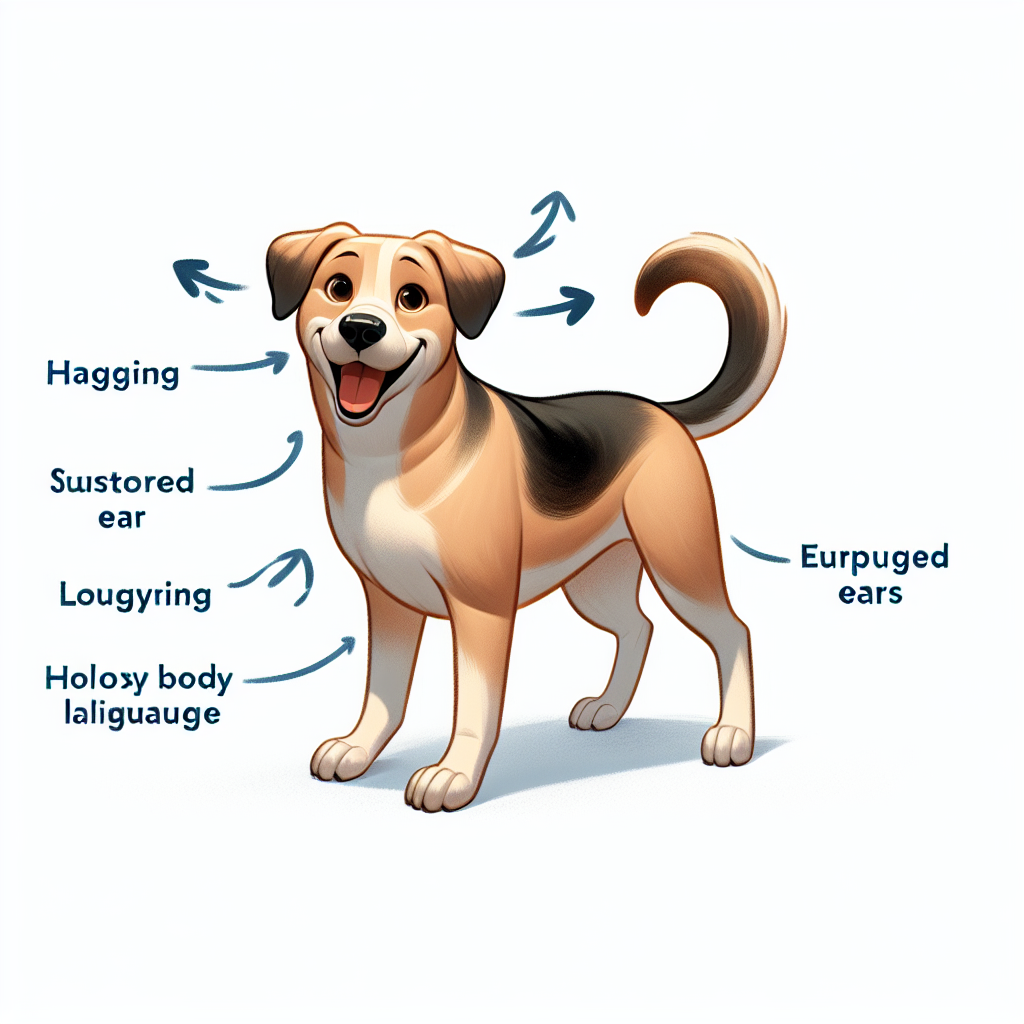Fleas: The Unwanted Guests on Your Feline Friend

Ah, fleas. Those tiny, irritating creatures that love to call your cat home. You didn’t invite them, yet here they are—sneaky little squatters. Your cat, majestic in its own right, becomes a battlefield. Fleas, with their quick jumps, are not just a nuisance; they’re a full-blown invasion. If you’re unlucky enough to have them, you know what I’m talking about. These pests can turn your life upside down.
Fleas don’t just hitch a ride. They bite, causing your feline friend to scratch like there’s no tomorrow. You might notice fur loss, or worst-case scenario, your cat could develop an allergy. It’s not just a physical thing; it’s emotional too. Watching your pet suffer is no fun. You might find yourself pacing the floor at night, brainstorming ways to declare war on these unwanted guests.
Recognizing the Signs: How to Spot Fleas on Your Cat
Spotting fleas isn’t rocket science, but it does take a keen eye. First, look for flea dirt. It’s like pepper sprinkled across your cat’s fur. Take a flea comb for cats—those fine-toothed combs are lifesavers. Run it through your cat’s fur and see if you catch any flea dirt or, worse, the fiends themselves.
Another red flag is excessive scratching. Your cat might scratch like it’s in a bad B-movie. If you see red bumps on their skin, it’s time to get serious. Flea infestation signs often include red, irritated skin and hair loss, especially near the base of the tail. It’s not pretty. Your cat might also have little white specks, which are flea eggs. Gross, right? That’s when you know—this is not just a small problem anymore.
The Battle Begins: First Steps to Take
So, you’ve confirmed fleas have taken over. What’s next? Don’t panic. The beginning flea treatment for cats involves a bit of detective work and a lot of elbow grease. First, clean your house. Seriously, vacuum like you’re possessed. Fleas love to hide in carpets and upholstery. This isn’t a one-and-done deal. You’ll need to vacuum regularly and wash your cat’s bedding in hot water to kill those pests.
Next, give your cat a bath. I know, I know—cats and water, not the best mix. But a flea bath can be a game-changer. Use a mild soap to drown those suckers. While the bath won’t completely solve the problem, it’s a good start. Your cat may give you the stink eye, but it’s for the greater good.
Tools of the Trade: Essential Items for Flea Removal
When it comes to flea removal tools for cats, you’ve got options. A flea comb is essential. It’s like having a magnifying glass to catch those sneaky critters. Then there’s the vacuum cleaner—your new best friend. Vacuuming removes fleas from carpets and furniture. Trust me, you’ll become very familiar with the sound of your vacuum.
But wait, there’s more. Consider using a flea spray for your home. It’s like setting up a little no-fly zone for fleas. Just read the labels—some of these can be harsh. Your cat doesn’t need more chemicals in its life, right?
For the cat itself, topical treatments are popular. They’re easy to apply and work fast. You just need to part the fur and apply it directly to the skin. Within a day or two, you’ll see fewer fleas. It’s not magic, but it’s close.
Prescription vs. Over-the-Counter: Choosing the Right Treatment
Here’s where the rubber meets the road—choosing between prescription flea treatment for cats and over-the-counter flea medication. Prescription treatments are heavy hitters. They’re often more effective but can cost a pretty penny. If your cat’s got a serious infestation, this might be your best bet. Your vet can guide you—because who knows your cat better?
Over-the-counter options are like the unsung heroes. They’re accessible and usually cheaper. But, they might not pack the same punch as prescription ones. With these, you might have to try a few before finding the one that works. It’s like dating—sometimes you kiss a few frogs before finding your prince.
And remember, you’re not alone in this. Many have fought the flea battle and won. You’ve got this. It’s a journey, not a sprint. Keep your chin up, and soon enough, your home will be flea-free. Thanks for sticking around, and may your cat roam flea-free forever.
The Natural Remedies You Probably Have at Home
Ah, the joy of finding a flea on your beloved cat—a tiny, hopping nemesis that’s about as welcome as a toothache. But before you rush off to the vet, take a peek in your kitchen. You might already have some natural flea remedies for cats hiding in plain sight. Now, I know what you’re thinking: how can something so ordinary be the answer to getting rid of fleas from a cat? Trust me, it’s worth a shot.
First off, let’s talk vinegar. Apple cider vinegar, to be precise. This stuff is the Swiss Army knife of the pantry. Mix it with a bit of water in a spray bottle, and voilà—an easy homemade flea spray for cats. Spritz it lightly on your cat’s fur, avoiding their face, of course. Fleas, it turns out, aren’t fans of the stuff. They’ll jump ship faster than you can say “scat.”
Then there’s the trusty lemon. Fleas hate citrus as much as I hate Monday mornings. Boil a sliced lemon in water, let it cool, and you’ve got yourself another homemade remedy. Dab it on your cat’s fur with a cloth. It’s like giving them a spa day, minus the cucumber slices. But remember, these natural remedies are like a gentle nudge—not a bulldozer. They help, but they ain’t the final blow if you’re knee-deep in a flea invasion.
The Vet’s Office: Your Cat’s Best Friend or Worst Enemy?
Now, onto the vet. The vet’s office—where you walk in with a wallet full and leave with one that’s echoing. But sometimes, it’s a trip you’ve got to make. I mean, how else are you going to get vet treatments for cat fleas that actually work?
Your vet is like that wise old sage in the flea-fighting saga. They’ve seen it all, and they’ve got more tricks up their sleeve than a magician at a kid’s party. From oral medications to topical treatments, they’ve got options. Sure, the price tag might make you wince. But hey, it’s your cat’s comfort we’re talking about here.
And when you’re knee-deep in flea drama, it’s often worth every penny. Plus, the vet can give your feline a once-over to make sure the fleas haven’t caused any other issues. Let’s face it, fleas are more than an itchy nuisance—they can lead to skin infections or worse. So, yeah, the vet’s office might feel like enemy territory when you’re signing the bill, but it’s also where you’ll find some serious firepower against fleas.
The Flea Comb: Small but Mighty
Enter the flea comb, the unsung hero of this whole flea debacle. Don’t let its size fool you—it’s a game-changer. Using a flea comb on cats is like going into battle with a trusty sword. It’s small, but it packs a punch.
The thing about a flea comb is that it’s not just about catching fleas. It’s about the ritual of it all. You and your cat, bonding over the rhythmic combing, while you capture those little pests. It’s oddly satisfying, like popping bubble wrap. Plus, there’s something empowering about seeing the evidence of your efforts—a comb full of those pesky critters.
Flea comb benefits for cats go beyond just removing fleas. It can help detect flea dirt (flea poop, if you will), which is a tell-tale sign that more fleas are lurking. It’s like being a detective in a noir film, except your cat is the damsel in distress. And sure, it takes time, but it’s time well spent, with your furry friend purring away.
Treating Your Home: The Unseen Battleground
Now, let’s talk about the battlefield—your home. You might think the war is solely on your cat, but your home is the unseen battleground. Fleas don’t just hang out on your cat. They’re in your carpet, your furniture, your bed. It’s like a bad horror movie, where the monster’s everywhere and nowhere.
So, how to get rid of fleas in the house? It starts with a good vacuum. Vacuum like there’s no tomorrow. Hit every nook and cranny. Then, wash your cat’s bedding in hot water. It’s not glamorous, but it works.
And for an extra punch, sprinkle some diatomaceous earth on your carpets. Leave it for a day, then vacuum it up. It’s natural and deadly to fleas—a perfect combo. You’ve got to treat your home like the fortress it is, defending against those invaders.
Preventing Future Infestations: A Cat Owner’s Guide
Finally, let’s talk prevention. Once you’ve fought the good fight, how do you stop it from happening again? Prevent flea infestations in cats by staying vigilant. Regular checks and grooming are key. Your cat might not thank you, but they’ll be the better for it.
Keep using that flea comb. It’s not just for crisis mode. It’s a preventative tool, too. Plus, your cat will love the attention. And maybe, consider a natural flea collar or a spot-on treatment. They’re like a security system for your pet—silent but effective.
And hey, don’t forget about your home. Keep it clean, and stay on top of things. It might feel like a lot, but it’s easier than dealing with another infestation.
So there you have it, a battle plan for the ages. You’re not alone in this—every cat owner’s been there. Remember, you’re doing great. You’ve got this. Your cat’s counting on you, and I know you won’t let them down. Thanks for sticking with me through this journey. Now, go give your cat a scratch behind the ears from me.
The Battle Plan: Natural Remedies to Try at Home
So, your cat’s got fleas. It’s like your furry friend’s become a host for a tiny circus. But don’t panic. I’ve been in the pet biz for over 20 years, and let me tell you, there’s a natural flea remedy for cats that doesn’t involve a hazmat suit or a mortgage. You’re at home, staring down at Fluffy, who’s scratching like there’s no tomorrow. You think—what now?
First off, there’s the good ol’ apple cider vinegar. Mix it with water, chuck it in a spray bottle, and spritz your cat’s fur. It’s not going to kill fleas, but it’ll make your cat less appealing to these little pests. Then there’s the power of lemon juice. Boil a sliced lemon in water, let it cool, and voila! You’ve got a natural flea deterrent.
And here’s a little secret—diatomaceous earth. It’s like a flea’s worst nightmare. Sprinkle it on your cat, let it sit for a day, then brush it out. But beware, don’t let your cat inhale it. These natural remedies might not be instant magic, but they’ll give those fleas a run for their money.
When to Call in the Cavalry: Vet Treatments Explained
Sometimes, despite your best efforts, those fleas dig in and refuse to budge. That’s when you ring up the vet. You see, vet flea treatments for cats are the big guns. We’re talking about treatments that pack a punch, like oral medications and topical solutions.
Your vet might suggest a pill that works in a flash—because sometimes you need fast action. There’s one that starts killing fleas in 30 minutes. The topical treatments? They’re like a shield, keeping fleas at bay for weeks. You slap it on your cat’s neck, and those fleas won’t know what hit them.
These treatments can cost you a pretty penny, but hey—better than your cat scratching itself bald. Besides, it’s about keeping your cat happy and itch-free. And trust me, when your cat’s not scratching, you’re both sleeping better.
Prevention is Better Than Cure: Keeping Fleas at Bay
Now that the fleas are gone (or on their way out), you’re probably wondering how to keep them away. Here’s where flea prevention tips for cats come in handy. You’ve got options, my friend. You could invest in a flea collar—they’ve come a long way since the old days. Today’s collars can repel fleas for up to eight months.
Then there are monthly spot-on treatments. They’re easy to apply and give you peace of mind. But if you’re like me and prefer to go the extra mile, you’ll want to vacuum regularly. I’m talking about moving furniture and getting into every nook and cranny. Fleas love to hide, and they leave eggs everywhere.
Keep your cat’s bedding washed and dried on high heat, too. These small steps go a long way in ensuring long-term flea control for cats. And remember, a little prevention now saves a lot of hassle later.
Tackling the Environment: Flea-Proofing Your Home
Alright, you’ve handled the cat, but what about your home? It’s like the fleas have set up camp and invited their friends over for a party. Enter home flea-proofing methods.
Start with a clean slate—vacuum like your life depends on it. Focus on carpets, rugs, and upholstery. Next, sprinkle some of that diatomaceous earth on your floors and in corners. It’s not just for cats, you know. Give it a couple of days and vacuum it up.
Wash anything that your cat’s been in contact with—bedding, toys, that blanket on the couch. Hot water and high heat are your friends here. And if you’re feeling like a gladiator in the arena, consider a flea bomb. Just clear the area of pets and people, let it do its thing, and come back to a flea-free zone.
It’s a bit of work, but hey—what’s a little elbow grease compared to a house full of fleas?
What Comes Next: Monitoring and Follow-Up
So, you’ve fought the good fight. You’re a warrior—and a tired one at that. But what comes next? Monitoring cat after flea treatment is crucial. Keep an eye out for signs of fleas making a comeback. Your cat’s biting, scratching, or you see flea dirt? Time for a follow-up flea check for cats.
Sometimes, it’s easy to miss a few fleas, and they’re sneaky little devils. But don’t despair. You can always repeat the natural remedies or call in the cavalry again.
Keep up with regular preventive treatments, whether it’s a collar, a spot-on, or something else. It’s like insurance for your cat’s comfort. And remember, the battle against fleas isn’t a one-and-done deal. It’s about vigilance and dedication.
Thanks for sticking with me through this flea saga. You’re not just a pet owner; you’re a flea-fighting hero. May your cat be itch-free and your home serene. Cheers!
Quick Takeaways:
Hey there, fellow cat companion. So, you’ve got a flea fiasco on your hands, huh? Don’t sweat it. Fleas—those little hitchhikers—are like that one guest who never knows when to leave. But fear not, getting rid of fleas from a cat is doable if you’ve got the right game plan. First, let’s talk about spotting these tiny nuisances. Look for flea infestation signs like excessive scratching or little black specks in your cat’s fur. A flea comb is your new best friend here. It’s a simple yet effective tool that makes those pesky critters visible and removable. Once you’ve confirmed the little buggers, it’s time for action.
You could start with over-the-counter flea medication—easy enough to find at your local pet store. But if that doesn’t cut it, a prescription flea treatment for cats from your vet might be necessary. In the meantime, try some natural flea remedies for cats. Things like apple cider vinegar or a gentle dish soap bath can help, though they’re not foolproof. And don’t neglect your home in this battle. Using a homemade flea spray for cats can help keep your space flea-free. Vacuum religiously, wash your pet’s bedding, and consider pest control if things get out of hand. Remember, beginning flea treatment for cats is just the start—you’ve got to stay vigilant to prevent flea infestations from coming back. So, hang in there. You’re doing a great job.
FAQs:
1. How do you get rid of fleas from a cat?
Great question. Start by using a flea comb for cats. It helps to catch and remove fleas from your cat’s fur. Next, consider over-the-counter flea medication. If those fleas are stubborn, vet treatments for cat fleas might be needed. And don’t forget to clean your home. Wash bedding and vacuum frequently to tackle fleas hiding in your house.
2. What are flea infestation signs in cats?
Ah, the tell-tale signs. If your cat’s scratching like it’s got a vendetta, that’s a clue. Flea dirt—those tiny black specks—are another warning sign. You might even see the fleas themselves, especially if you’re using a flea comb on cats. Keep an eye out for hair loss or red, irritated skin.
3. Are there natural flea remedies for cats?
Yes, there are. Natural flea remedies for cats include things like apple cider vinegar diluted with water. A gentle dish soap bath can also help. These methods aren’t as potent as prescription flea treatment for cats, but they can support your battle plan. Just remember, consistency is key.
4. How do you get rid of fleas in the house?
Time to roll up those sleeves. Start by vacuuming every nook and cranny. Wash your cat’s bedding and any fabric your cat frequents. Consider using a homemade flea spray for cats, or even a commercial one if the infestation is severe. Persistence is your ally here.
5. How can you prevent flea infestations in cats?
Prevention is all about routine. Regularly use a flea comb to check for early signs. Keep up with vet-recommended flea treatments for cats. Over-the-counter options are available, too. Finally, keep your home clean and free from flea-friendly environments.
Conclusion:
So, there it is—how do you get rid of fleas from a cat? It’s no small task, but it’s one you’re more than capable of handling. Armed with a flea comb, some dedication, and maybe a sprinkle of humor, you’re on the right track. Remember, whether it’s prescription flea treatment for cats or natural remedies, consistency is your best friend. And hey, don’t forget your home in this saga. It’s a battleground that needs attention, too.
Let’s face it, fleas are relentless, but so are you. Keep an eye out for flea infestation signs, act quickly, and stay persistent. You’re doing this not just for your cat, but for your peace of mind. As you sip that cup of tea—or maybe something a little stronger—know that you’ve got this under control. So here’s to you, the unsung hero in your cat’s life. Thanks for sticking it out, and may your feline friend be itch-free and full of purrs. Cheers!
References:
1. https://www.petmd.com/cat/general-health/get-rid-of-fleas-on-cats
2. https://www.rspca.org.uk/adviceandwelfare/pets/general/fleas
3. https://www.protect-mypet.com/blog/how-to-get-rid-of-fleas-on-cats-fast/
4. https://www.chewy.com/education/cat-fleas
5. https://be.chewy.com/help-my-cat-has-fleas-signs-treatment-and-prevention/
Our solution eradicates fleas on contact without harmful chemicals, ensuring a safe environment for your pets and family. Easy to use and highly effective, SayByeBugs helps you maintain a flea-free home. Learn more and order today at SayByeBugs.com
Our solution eradicates fleas on contact without harmful chemicals, ensuring a safe environment for your pets and family. Easy to use and highly effective, SayByeBugs helps you maintain a flea-free home. Learn more and order today at SayByeBugs.com




